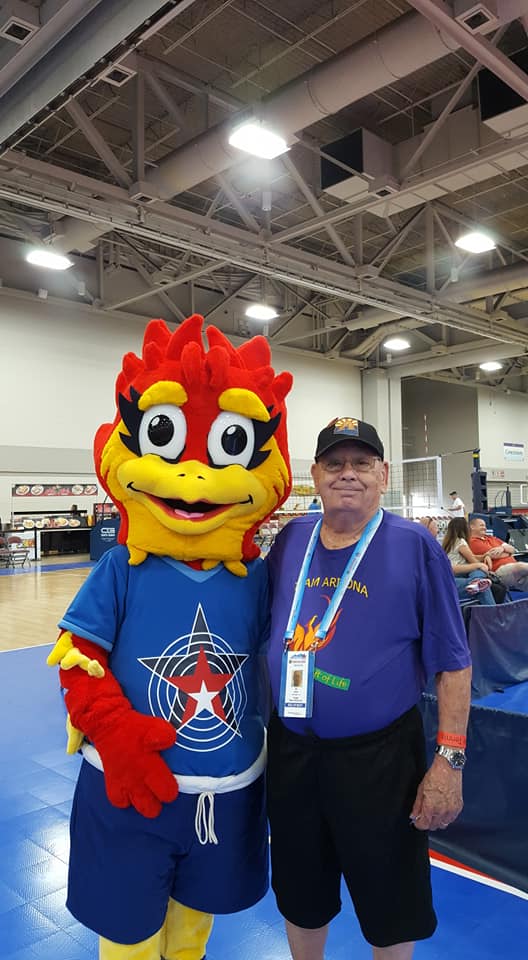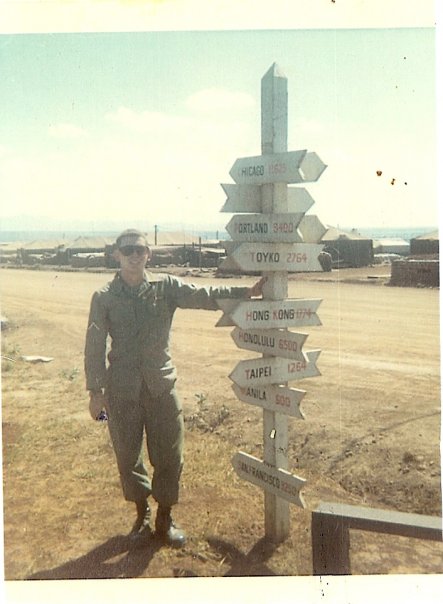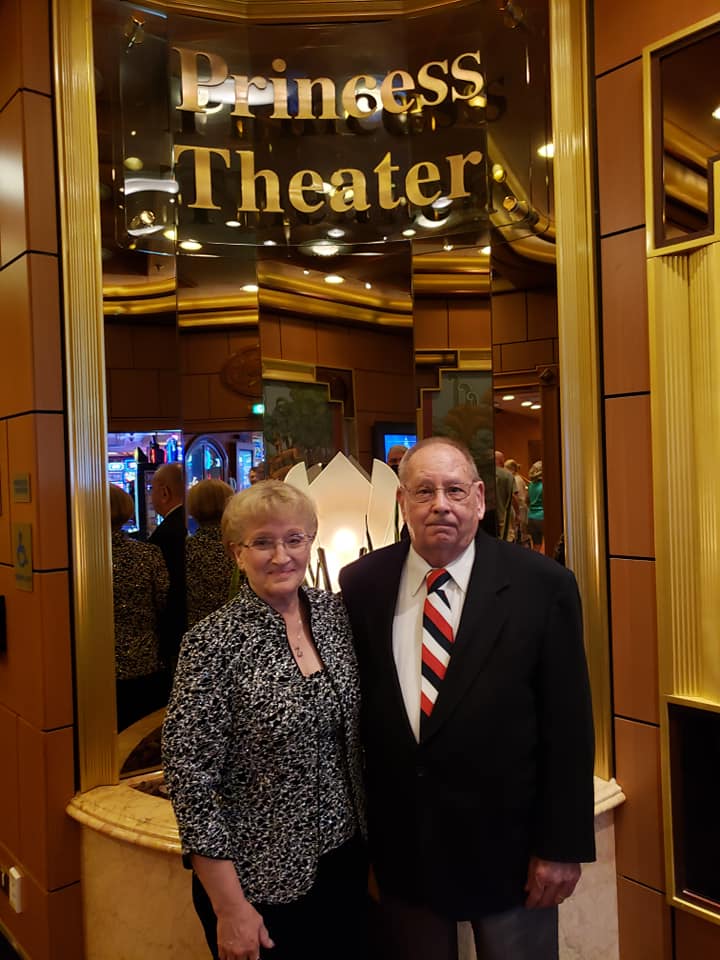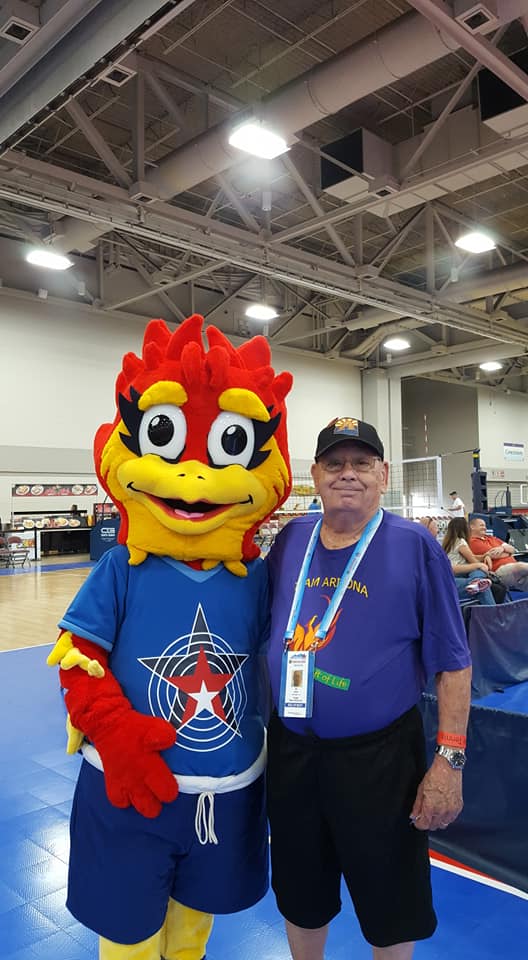Ed has seen a few things in his life. He has served in Vietnam, got his bachelor’s and graduate degrees, and married the love of his life. He has had so many beautiful life moments to share over his lifetime. He has also had a very surreal timeline running parallel to these moments. He lived with kidney disease in a time that a kidney transplant went from science fiction to reality.
It all started with a bad case of gout, or that is what Ed attributed his pain to. He began getting the attacks in high school off and on. The attacks continued but stayed the same through his time in the Army. He had an added problem of poor eyesight, which he recognized right away in basic training when he couldn’t hit his targets. This turned out to be keratoconus, which is an added indicator of kidney disease. Upon an exit medical exam from the army, Ed was told that he had high blood pressure and albumin in the urine (an indicator of liver/kidney dysfunction), but there was no follow up required; thank you for your service.
After finishing military service in Vietnam, Ed was married to his wife Linda and finished graduate studies at Northern Arizona University. When a terrible gout attack left him nearly immobile, he became very concerned. He is thankful that he was young and skinny, or else his wife wouldn’t have been able to have helped him to the doctor.
His local doctor realized Ed’s condition was out of his scope and referred him to a kidney doctor in Phoenix. He advised him to leave immediately and that his condition needed prompt attention. Ed was disappointed because he was 16 units away from graduating, but he went anyway.
After making his way to Phoenix, he met up with his nephrologist, one of Phoenix’s first in the 1970s. He had his appointment and a whole lot of lab tests. The conclusion was that his kidneys were in terrible shape and that he was very sick. His kidney doctor notified him that he was on dialysis as of that moment.
This is what Ed considers to be the true beginning of his transplant journey. At the old Northwest hospital on 59th and Northern. It was the early 80’s now, and he was a regular at the dialysis center. He went three days a week after closing his business for the night. The staff there tried to make things fun because most spent quite a bit of time there. Every Wednesday night, they would watch the TV show Dallas together. The regulars would have time to catch up on their lives and support one another. Reality would set in when they noticed that someone would stop showing up. It was sometimes a sign of improving health or a transplant, but it was often a sign of decline or worse.
Ed, like so many others, immediately began the search for a living donor. His mother wasn’t a match for him but was for his sister, who was also burdened with kidney disease. And so, he was placed on the waiting list. He had a couple of false alarms of donors who didn’t end up being a match. But finally, the day came when his surgeon told him to prepare because they finally had a match. Ed remembers his surgeon with much reverence and respect. Dr. Van der Werf moved to the United States in the late sixties and established the Netherlands, Florida, and Arizona’s original kidney transplant programs.
His transplanted kidney was good and true for 14 years. In the last 3 of those 14 years, he noticed a slow decline in function. It was time to go on the list again. But this time, with a high antibody count, which worked against him on the waiting list. He also had different symptoms, one being pericarditis, which causes fluid and inflammation around the heart. Once the pericarditis was diagnosed, he began dialysis again. Except for this time, it was a journey of 54 months, or 4 and a half years, on dialysis. In those days, few people got transplants at all. But even less so that was highly sensitized. After his long wait, he was rewarded with a second (or third in Ed’s case) chance at life. He remembers waking up and being clear-headed for the first time in years. And with the meds not being novel and more streamlined, he didn’t have the same side effects from the immunosuppressants and steroids as the first time around.
This second transplant also stayed true for another 14 years. And the same as the previous time in the last 3 of those years, his numbers declined again. This time they were using IVIG to counter high antibodies. Plus, he had a former graft get infected. There were so many surgeries. But luckily for him, the new rules came out regarding kidney transplants. A CRPA (Calculated Panel Reactive Antibodies) calculator helped kidney patients get priority on the waiting list. This time he was on the list 9 months before he needed dialysis. Another 9 weeks of dialysis before he got his call. And that is the kidney he is thriving with until this very day, his fourth chance at life.
These days Ed looks forward to his advocacy work with the AAKP, time with his Transplant Team Arizona teammates, and most importantly, valued time with his family. He talks about how he got to go to Washington DC with the AAKP (he is a lifetime member) and advocate for some of the current kidney legislation making it’s way to the Senate. He found the representatives there to be very helpful overall.
Having a genetic link with his father with kidney disease, he decided to get into his family’s genealogy. He found links in every generation back that he had researched, showing nearly a hundred years of his family surviving with kidney disease, but never for very long.
He feels fortunate to be thriving with his siblings in this day and age, where medical advances can overcome such things.
The best advice for new transplant patients is to educate yourself. Your doctor may tell you things, but in the end, you are in charge of your care with the educated guidance of your medical staff. Make sure to speak up and be part of the medical team.





Leave A Comment